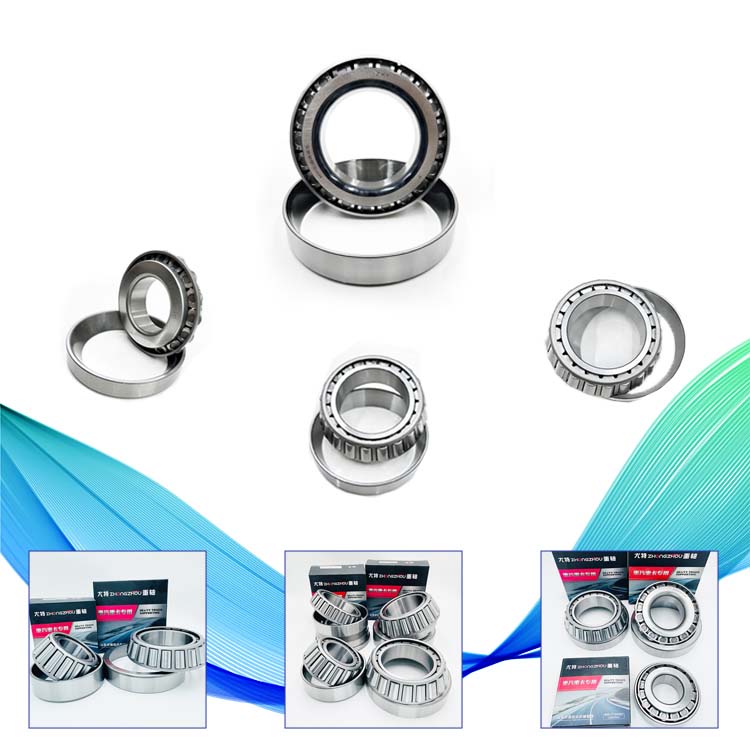- English
- Español
- Português
- русский
- Français
- 日本語
- Deutsch
- tiếng Việt
- Italiano
- Nederlands
- ภาษาไทย
- Polski
- 한국어
- Svenska
- magyar
- Malay
- বাংলা ভাষার
- Dansk
- Suomi
- हिन्दी
- Pilipino
- Türkçe
- Gaeilge
- العربية
- Indonesia
- Norsk
- تمل
- český
- ελληνικά
- український
- Javanese
- فارسی
- தமிழ்
- తెలుగు
- नेपाली
- Burmese
- български
- ລາວ
- Latine
- Қазақша
- Euskal
- Azərbaycan
- Slovenský jazyk
- Македонски
- Lietuvos
- Eesti Keel
- Română
- Slovenski
- मराठी
- Srpski језик
Tapered Roller Bearings
2023-10-06
Tapered roller bearings are separate bearings. The inner and outer rings of the bearing have tapered raceways. This type of bearing is divided into different structural types such as single-row, double-row and four-row tapered roller bearings according to the number of rows of rollers installed. Single row tapered roller bearings can bear radial loads and axial loads in one direction. When the bearing is subjected to a radial load, an axial component force will be generated, so another bearing that can withstand the axial force in the opposite direction is needed to balance it.
Features:
The type code of tapered roller bearings is 30000, and tapered roller bearings are separate bearings. Under normal circumstances, especially within the size range involved in GB/T307.1-94 "Rolling Bearings Radial Bearing Tolerances", the outer ring and inner components of tapered roller bearings are 100% interchangeable.
The angle of the outer ring and the diameter of the outer raceway have been standardized and specified as the outer dimensions. Changes during design and manufacturing are not allowed. As a result, the outer ring and inner components of tapered roller bearings can be interchanged worldwide.
Tapered roller bearings are mainly used to bear combined radial and axial loads, mainly radial loads. Compared with angular contact ball bearings, they have large load-bearing capacity and low limit speed. Tapered roller bearings can withstand axial loads in one direction and can limit the axial displacement of the shaft or housing in one direction.
use:
Tapered roller bearings mainly bear combined radial and axial loads, which are mainly radial. The load-bearing capacity of the bearing depends on the raceway angle of the outer ring. The larger the angle, the greater the load-bearing capacity.
This type of bearing is a separable bearing and is divided into single-row, double-row and four-row tapered roller bearings according to the number of rows of rolling elements in the bearing.
The clearance of single-row tapered roller bearings needs to be adjusted by the user during installation; the clearance of double-row and four-row tapered roller bearings has been set according to user requirements when the product leaves the factory and does not require user adjustment.
Tapered roller bearings have conical inner and outer raceways, with tapered rollers arranged between them. The projection lines of all conical surfaces converge at the same point on the bearing axis. This design makes tapered roller bearings particularly suitable for carrying combined (radial and axial) loads.
The axial load capacity of the bearing is mostly determined by the contact angle α; the larger the α angle, the higher the axial load capacity. The size of the angle is expressed by the calculation coefficient e; the larger the value of e, the larger the contact angle, and the greater the suitability of the bearing for bearing axial loads.
Tapered roller bearings are usually of the separable type, that is, the tapered inner ring assembly consisting of an inner ring with a roller and cage assembly can be installed separately from the tapered outer ring (outer ring).
Tapered roller bearings are widely used in automobiles, rolling mills, mining, metallurgy, plastic machinery and other industries.




